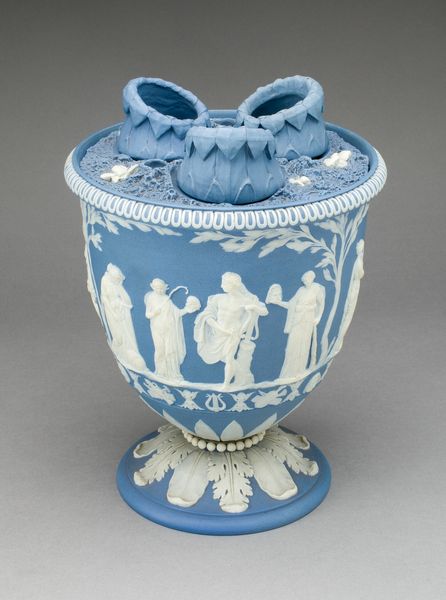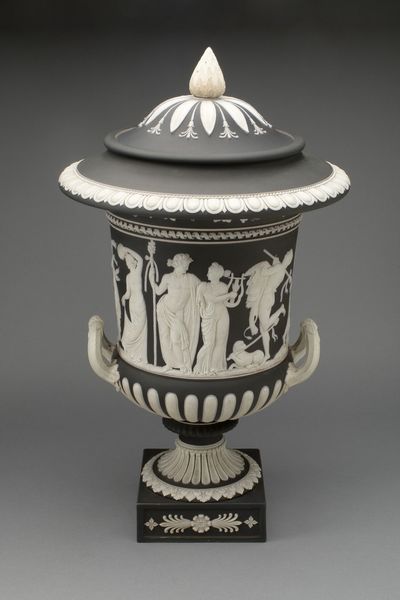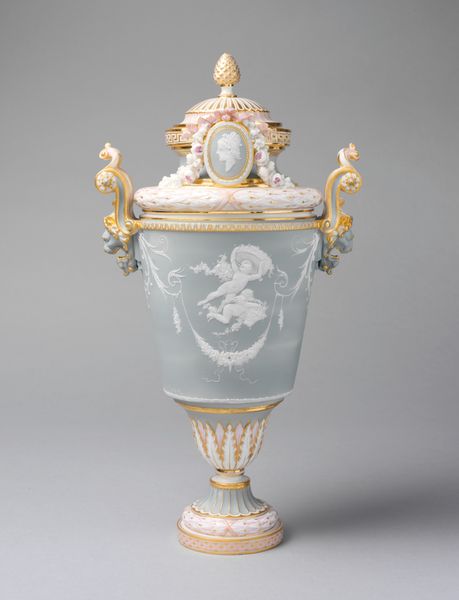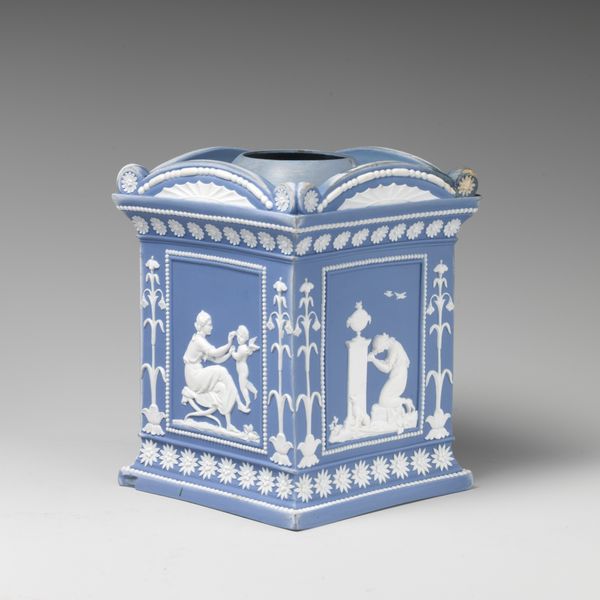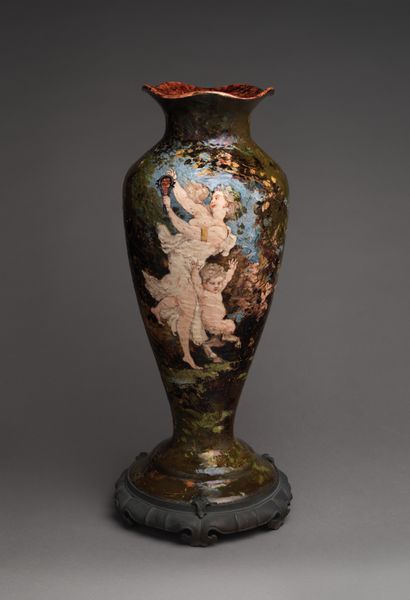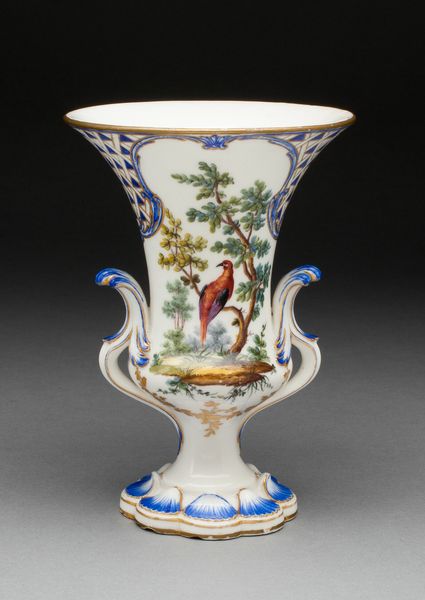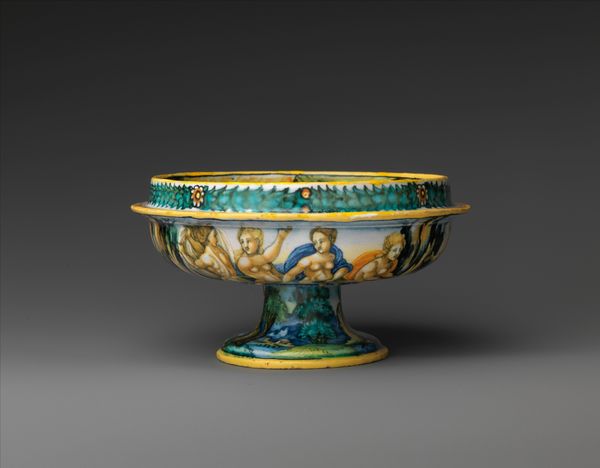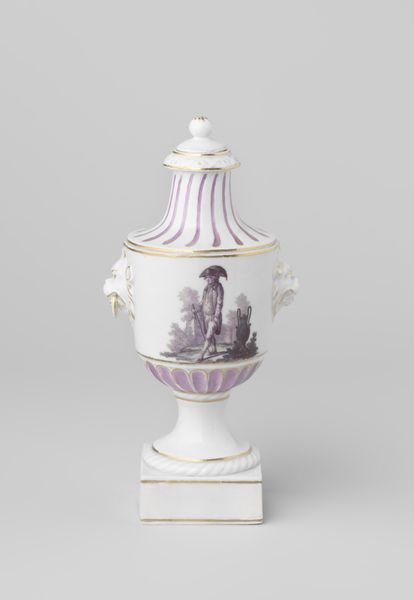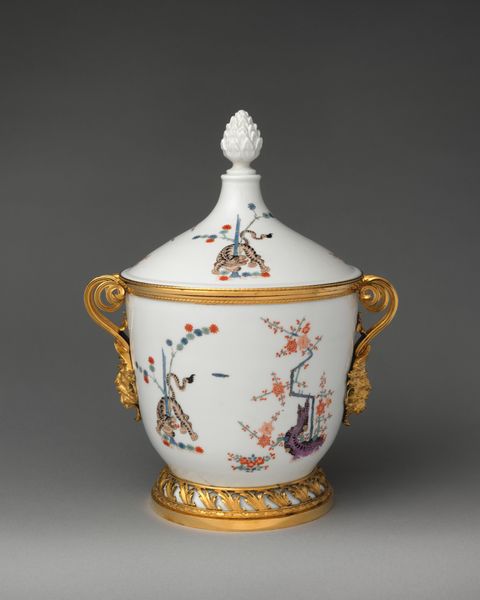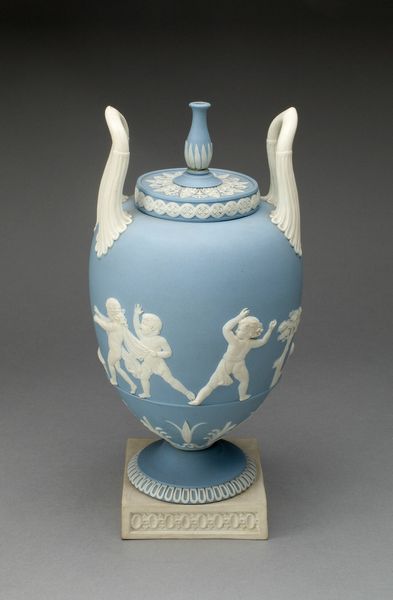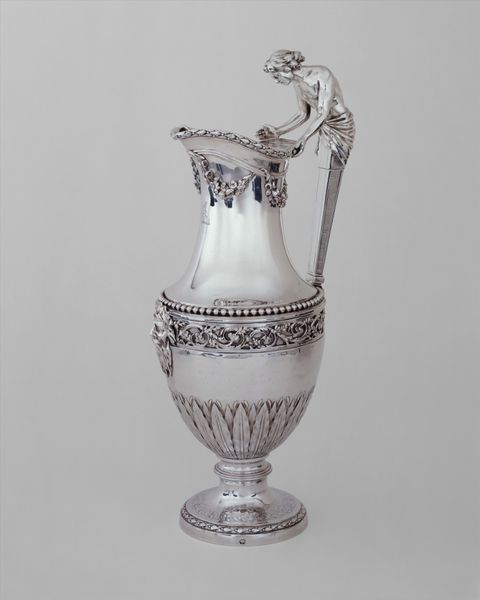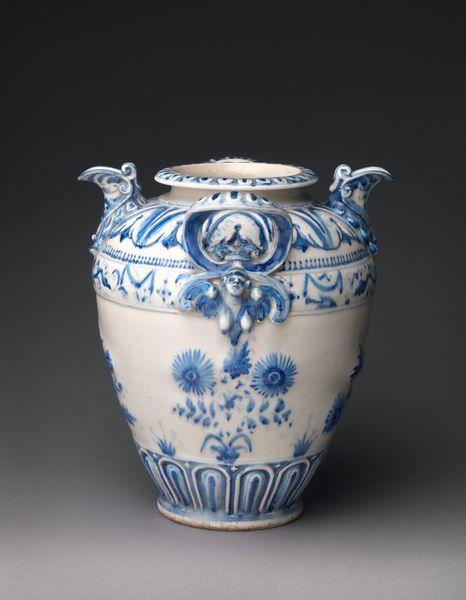
relief, ceramic, sculpture
#
neoclacissism
#
relief
#
ceramic
#
figuration
#
sculpture
#
ceramic
#
decorative-art
Dimensions: Height (with cover): 18 5/8 in. (47.3 cm)
Copyright: Public Domain
Curator: Oh, look at this piece. It’s stately but somehow serene at the same time. Editor: It's speaking to me of rigid class structures and delicate fragility, wouldn't you say? It is the “Urn with cover,” created sometime between 1775 and 1805 by Jan de Vaere. We are lucky to have it here at the Metropolitan Museum of Art. Curator: Serene yet… constrained. Almost as if frozen in time, this dance captured in ceramic relief. What do you read into it, activist? Editor: Beyond the seemingly elegant form, I see an object that embodies the neoclassical obsession with idealized beauty and control. Think about the social upheaval happening then. The white figures so prominently displayed against the Wedgwood blue speak to a desire for order amid chaos, but also, perhaps unconsciously, expose an oppressive hierarchy. Curator: Wedgwood blue—you're so right! It does feel like a longing for something… simpler, maybe? It's like a dream, but one you can’t quite touch, the whiteness so bright, almost blinding, against that gentle blue. I mean, the ceramic form itself is deceptively sturdy, but could shatter into a million pieces. The perfect encapsulation of trying to hold onto something ephemeral? Editor: I think you nailed that sensation of ‘untouchableness’. It represents this obsession with a distant past, ignoring the lived realities of those creating this 'dream.' Also, look closer. Aren’t those figures lifted almost directly from classical sculptures celebrating… what… mostly wealth, power, whiteness, and patriarchal dominance? Who gets to define beauty and 'the good life'? Curator: Well, those curves. They look like frozen water, this constant flux… The urge for this urn is timeless, and to this day it resonates within me. There is perfection but then you zoom in on this imperfection. The idea itself! Editor: Agreed; a tangible example of how art serves as both a mirror and a lens. A mirror reflecting the values of its time, and a lens that, with careful examination, can reveal so much more. The piece as an instrument to encourage discourse, to analyze power. Curator: It's like holding history in your hands – or wanting to! Something both achingly lovely and a tiny bit haunted. Editor: Right? And that unsettling beauty is precisely where its power lies, for us.
Comments
No comments
Be the first to comment and join the conversation on the ultimate creative platform.
